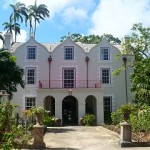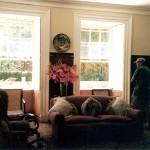 The great house came into view, shabby and overgrown, yet elegant somehow. The outmoded parapets like white waves against the red shingled roof, the azure sky. Hounds bayed; I heard a peacock scream and felt a sweet deep hurt in my breast. A hurt I did not want to let go of. I fully expected to see my father come out of the house with a glass of sangaree in his hand… (from Barbados Bound; book one of the Patricia MacPherson Nautical Adventure Series)
The great house came into view, shabby and overgrown, yet elegant somehow. The outmoded parapets like white waves against the red shingled roof, the azure sky. Hounds bayed; I heard a peacock scream and felt a sweet deep hurt in my breast. A hurt I did not want to let go of. I fully expected to see my father come out of the house with a glass of sangaree in his hand… (from Barbados Bound; book one of the Patricia MacPherson Nautical Adventure Series)
It is on the Caribbean island of Barbados, on the very sugar plantation where she was born, that Patricia comes face to face with the ugly truth about her father. (As a writer I have written several stories in which fathers don’t measure up. In fact, they fail miserably. Which is funny since my own Dad was all a father could be, and then some.)
In my mind the estate Patricia longs to inherit is St. Nicholas Abbey, a real Jacobian great house in St. Peter’s Parish. Despite the name, St. Nicholas Abbey was never an abbey at all and had no connections with the church. Built between 1650 and 1660 by Colonel Benjamin Berringer, St. Nicholas is the oldest house in Barbados. For me, it was the inspiration for the birthplace of the fictional Patricia Kelley MacPherson, the illegitimate daughter of the second son of an English baron. The house would have already been a hundred years old when Patricia was born — and if walls could talk, it already had stories to tell.
The original owner of the plantation, Colonel Berringer, was killed in a duel with his neighbor, Sir John Yeamans, who subsequently married his rival’s widow and left Barbados for South Carolina, where he became the governor. Now, there is another novel for you, filled with all sorts of sordid details, I’msure! The house was named after one of Col. Berringer’s descendants, according to a local historian. Berringer’s son left the estate to his daughter Susanna, who married a man named George Nicholas. Apparently no one knows how the “Saint” or “Abbey” came to be attached — and I rather doubt if any of the owners were worthy of canonization. (God forbid, it might have been called Susanna’s house! But not much has ever been named after women, except hurricanes and a few boats, fighter planes, and cannons…)
Bob and I visited Barbados in 2002, as I was researching the novel I called Orion Rising but that would be published by Knopf as Star-Crossed in 2006. Now out of print with Knopf, the book will soon be reborn as Barbados Bound, under the Fireship Press label. It is in press now.
The thick stone walls provide a respite from the hot, bright Caribbean sun. Inside, was cool, dark and sparely elegant. What I most remember about St. Nicholas Abbey was the heavy presence of ghosts. The ghosts of indentured servants and countless African slaves who worked and died there. We will never know their names or their stories, but we can imagine them. I resurrected one possible ghost; that of Patricia’s half brother Rupert Hatterby — a mulatto who was given his freedom by his white father, but little else. Except the name Hatterby, her father’s surname, which is something Patricia always coveted but as a natural child was never given.